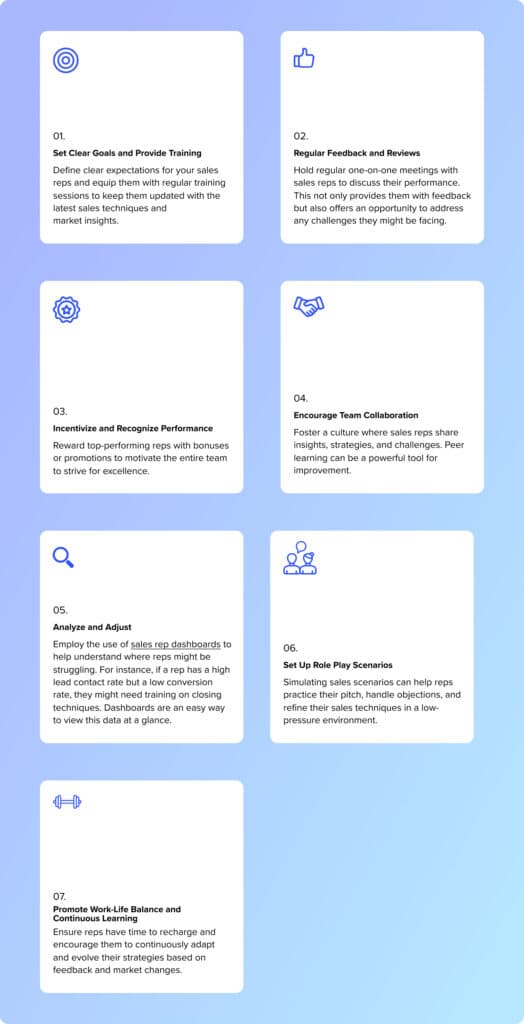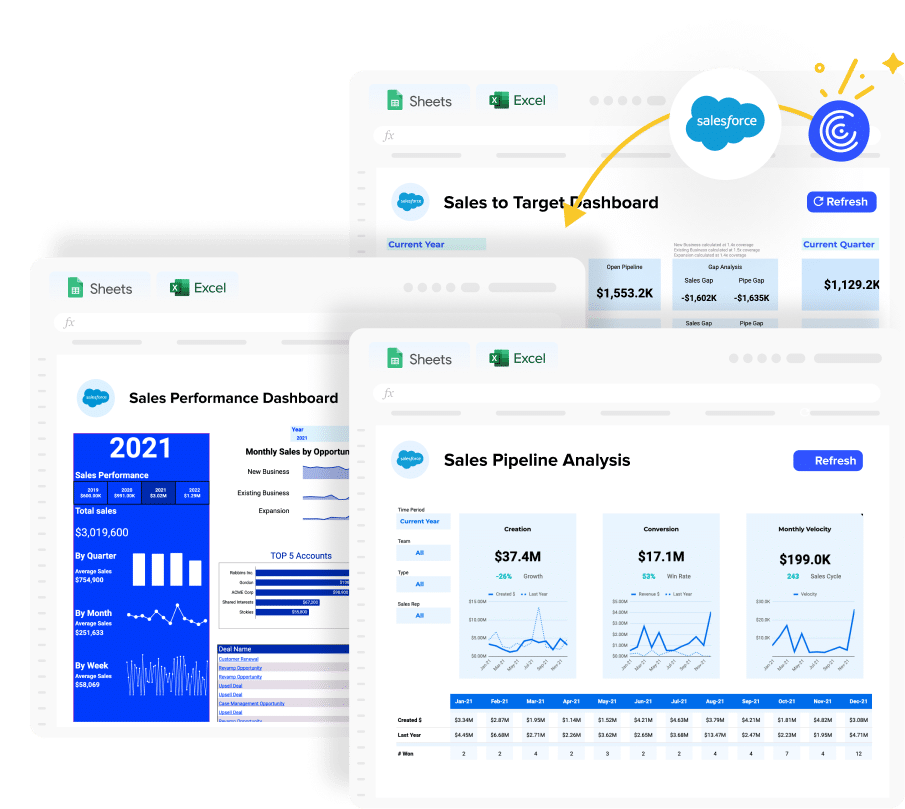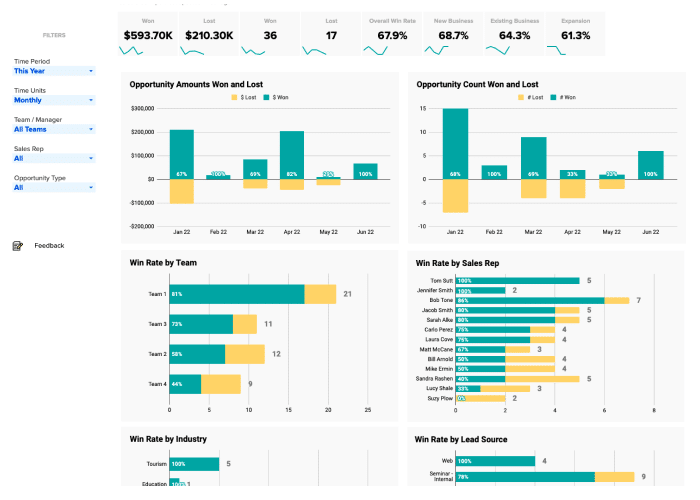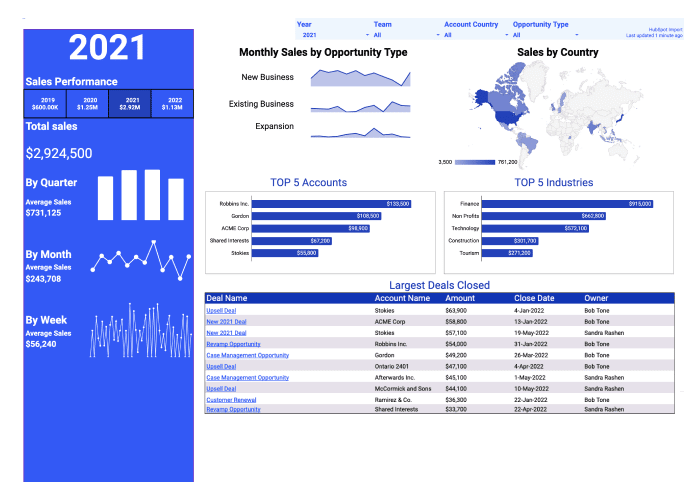A Command Center for Your Accounts, in One Dashboard
Spur future business and solidify client relationships with a complete overview of your customer accounts. View and compare your accounts side-by-side, including high-level metrics across clients. Drill into specific accounts, including open opportunities, closed lost, and closed won timelines, to generate future sales with precision data.
Accounts Overview Dashboard helps you:
- For each account, leverage a full timeline of sales activity to enhance client relationships and win future deals.
- Create new deals and assign tasks to sales reps by identifying “lapsed accounts” with no activity
- Easily access a full summary of your past performance and sales efforts for each account.
- Automatically track sales reps associated with each account, along with their main points of contact.
How to Track Sales Rep Performance?
Before you start tracking sales rep performance it’s important to establish clear and measurable objectives for your sales reps. These could include revenue targets, number of new clients acquired, or other specific goals.
Other key performance indicators (KPIs) could include:
- Sales Volume: Track the number of deals closed by each rep to gauge their productivity.
- Conversion Rate: Measure the percentage of leads that a rep converts into customers.
- Average Deal Size: Understand the average value of deals closed by each salesperson.
- Sales Cycle Duration: Monitor the average time taken by a rep to close a deal.
Defining success is the first step – once established, regular monitoring of rep performance becomes crucial.
While Salesforce offers foundational reporting tools, it may not delve deep enough for some. Coefficient enhances this by offering tailored dashboards that integrate effortlessly with Salesforce, delivering profound insights into sales rep activity.
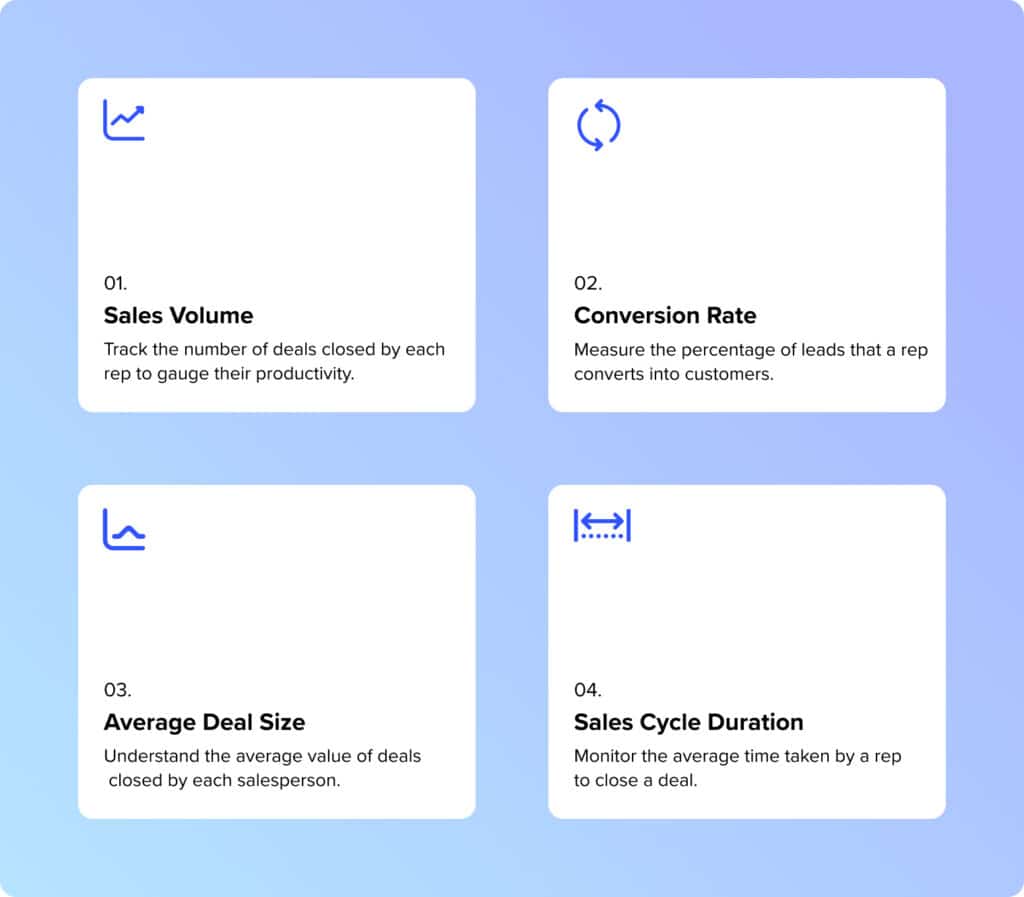
How to Improve Sales Rep Performance?
Improving sales rep performance is crucial for achieving sales targets and driving revenue growth. Here are seven proven ways to improve rep performance:
- Set Clear Goals and Provide Training: Define clear expectations for your sales reps and equip them with regular training sessions to keep them updated with the latest sales techniques and market insights.
- Regular Feedback and Reviews: Hold regular one-on-one meetings with sales reps to discuss their performance. This not only provides them with feedback but also offers an opportunity to address any challenges they might be facing.
- Incentivize and Recognize Performance: Reward top-performing reps with bonuses or promotions to motivate the entire team to strive for excellence.
- Encourage Team Collaboration: Foster a culture where sales reps share insights, strategies, and challenges. Peer learning can be a powerful tool for improvement.
- Analyze and Adjust: Employ the use of sales rep dashboards to help understand where reps might be struggling. For instance, if a rep has a high lead contact rate but a low conversion rate, they might need training on closing techniques. Dashboards are an easy way to view this data at a glance.
- Set Up Role Play Scenarios: Simulating sales scenarios can help reps practice their pitch, handle objections, and refine their sales techniques in a low-pressure environment.
- Promote Work-Life Balance and Continuous Learning: Ensure reps have time to recharge and encourage them to continuously adapt and evolve their strategies based on feedback and market changes.
How to Track Sales Account Performance?
Diligently tracking and analyzing sales account performance allows businesses to make informed decisions, ensuring sustained growth and success.
Improving sales account performance is pivotal for any business aiming for growth. To effectively track a sales account’s performance, consider the following approach:
- Determine Key Metrics: Start by identifying essential metrics that align with your sales and business objectives.
- Revenue: The total amount of money generated from sales to the account.
- Conversion rate: The percentage of leads that convert into sales.
- Average deal size: The average amount of money generated from each sale.
- Sales cycle length: The average amount of time it takes to close a sale.
- Customer satisfaction: The level of satisfaction that customers have with your products or services.
- Retention rate: The percentage of customers that continue to do business with you after their initial purchase.
- Use a Customer Relationship Management (CRM): Salesforce can provide sales teams with a comprehensive view of their sales account performance. Sales teams can use it to measure new opportunities, pipeline, make forecasts, and track any other sales activities (e.g. calls, emails, and meetings).
- Regular Monitoring: Consistently track your metrics to stay informed about the trajectory of your sales: Weekly, monthly, and quarterly. Regularly monitoring account performance can also provide insights into which sales channels work best, the top-performing sales reps, popular products, and potential sales barriers.
- Make Strategic Adjustments: Based on your findings, refine your sales strategy. For example, this could mean targeting a different market segment, enhancing the sales process, or even adjusting pricing.
